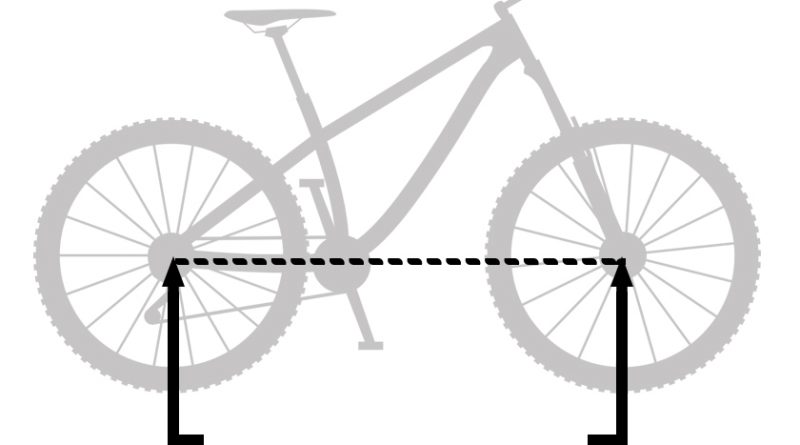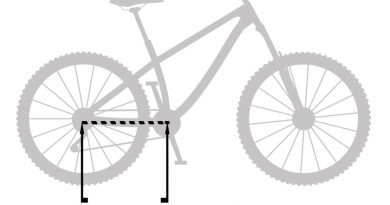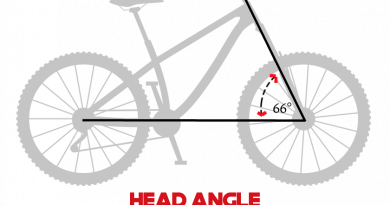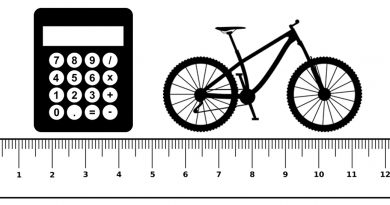What Is Wheelbase On A Bike? (Explained)
- What is Wheelbase on a Bike?
- What Is The Average Mountain Bike Wheelbase?
- What Is A Long Wheelbase And Short Wheelbase On A Bike?
- How Does Wheelbase Affect Bike Handling?
- How To Measure A Bikes Wheelbase?
- Why Do Downhill Bikes Have A Longer Wheelbase Than Other Bikes?
- Is a Long Wheelbase Bike Better Than a Short Wheelbase?
- How do I Know If My Bike's Wheelbase Is Too Short?
- How Do I Know If My Bike's Wheelbase Is Too long?
- Are Mountain Bike Wheelbase's Getting Longer?
What is Wheelbase on a Bike?
The wheelbase of a bike is defined as the distance between the center of both the front and rear axle of the bike. A bicycle wheelbase is measured from the center point of the front axle to the center point of the rear axle. It is one of the key measurements of bike geometry and is often cited as one of the ways to measure how a bike’s steering speed, responsiveness, and stability will perform. The wheelbase of a bike can be affected by two different aspects of the bikes geometry:
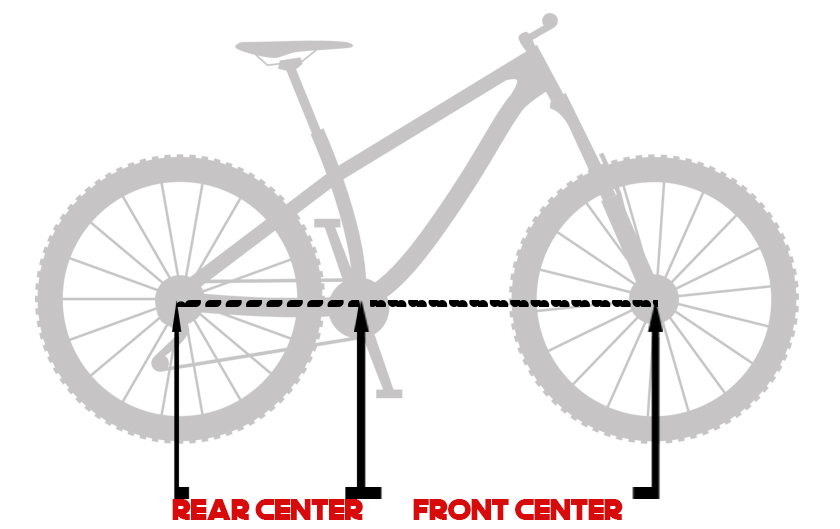
Rear center: The distance from the center of the bottom bracket to the center of the rear wheel axle.
Front center: The distance from the center of the bottom bracket to the center of the front wheel axle.
What Is The Average Mountain Bike Wheelbase?
The average wheelbase of a mountain bike is 1210.8 mm, so it could be said that anything significantly longer than that would be classified as a long wheelbase and anything significantly short wheelbase. However, the average mountain bike wheelbase makes more sense if you break it down by genre of mountain biking and frame size. Please see the table and graph below:
| Average wheelbase (by mountain bike type) | Size Small | Size Medium | Size Large |
|---|---|---|---|
| XC | 1117mm | 1149mm | 1179mm |
| Trail | 1149mm | 1171mm | 1201mm |
| Enduro | 1216mm | 1245mm | 1272mm |
| Downhill | 1250mm | 1269mm | 1292mm |

What Is A Long Wheelbase And Short Wheelbase On A Bike?
- Generally speaking, anything over 1270mm is classed as a long-wheelbase bike in mountain biking.
- Road bikes have an average wheelbase of around 985mm, so anything longer than that is more towards the long-wheelbase end of bike geometry. Below these measurements is more of a short wheelbase bike.
- In fact, the six most popular road bikes on the market at the moment vary only 7mm from each other – from 983mm to 990mm. This might not seem like much of a difference, but it would be very noticeable to most advanced riders.
How Does Wheelbase Affect Bike Handling?
It can be hard to judge just how the wheelbase alone affects bike handling as there are different factors that combine to make different wheelbase lengths, and they all have an effect. However, wheelbase length itself, taken on its own as an isolated unit of measure, can have a huge effect on bike dynamics, and looking at the wheelbase of a particular bike can be a good way to see how the bike will perform, what the bike will be best for and whether or not it fits your particular needs.
How does a longer wheelbase affect bike handling?
- Long wheelbase bikes have improved stability, particularly at speed or with an increased load.
- However, longer wheelbase bikes usually require more input from the rider at lower speeds, in particular on tighter sections of track.
- The longer the wheelbase, the less the rider’s weight distribution is affected by braking or changes in terrain – whether the gradient or an increase in the roughness of the terrain.
- It means that there is a larger area where the rider can be sat “just right” on the bike without being too far forward or too far backward.
- However, this does make manuals and nose pivots harder to perform.
- The handlebars need to be turned to a greater angle to get the bike to follow through a corner.
- More aggressive riders might prefer the feel of a longer wheelbase bike as they are more stable at speed and confidence-inspiring.
- Riders who prefer riding steep terrain might prefer a bike with a longer wheelbase, this will give them more stability and more space to move on the bike.
How does a short wheelbase affect bike handling?
- Short wheelbase bikes are less stable and can wobble at high speeds or when carrying increased loads.
- Short wheelbase bikes generally turn faster and better than long wheelbase bikes.
- Short wheelbase bikes are easier to maneuver around trails.
- They are also easier to get over obstacles on a mountain bike trail due to the fact that it is easier to lift the front wheel.
- There is less risk of the back wheel clipping the outer edge of the corner as you turn.
- Weight distribution plays a role in determining what length bike a rider should opt for as well. Remember if a bike is too long it will be as hard to ride, as a bike that’s not long enough. If you can, always use the manufactures sizing charts as a start guide, and test rides a bike before you buy.
- A sprinter would be more suited to a short wheelbase bike. This is because they will be leaning further forward on the bike, and this will help them position themselves with optimum power output.
- Riders who prefer riding tight, technical terrain might also prefer a bike with a shorter wheelbase, as the bike will feel much more agile.
- Short wheelbase bikes can also be more fun on less demanding terrain where they are more engaging and playful.
- On-road bikes, touring bikes usually have longer wheelbases due to the need for increased stability with added loads.
- On mountain bikes, cross country bikes usually have a shorter wheelbase than downhill or enduro bikes.
However, ultimately there are many aspects to a bike’s construction that affect how it handles. It is important to understand exactly where the length actually is – whether it is added or removed in the head angle, the rear or front center length, the chainstay length, or a combination of all of these. All of these factors can affect handling in different ways. Also remember wheel size, stem lengths, etc., can all also change how a bike feels.
The wheelbase is just one factor that needs to be considered in a bike’s geometry and should not be the deciding factor. To keep it simple, a short wheelbase makes a bike more maneuverable, but less stable at speed, and a longer wheelbase bike makes a bike slower in turns, but much more stable at speed.
How To Measure A Bikes Wheelbase?
The bike wheelbase can be measured as the distance between the axles of the two wheels of the bike. It is relatively easy to measure it yourself.
- Set the fork straight ahead in order to ensure that the measurement is correct.
- Use a tape measure to measure the distance.
- Measure between the center of the front axle and the rear axle of the bike.
- Another way to look at it is to measure the distance between the dropouts of the bike frame.
- It is also possible to measure from the point where the front tire and the rear tire touch the ground, although measuring the distance between the axles is easier and much more accurate.
- Another way that it can be measure is by placing a muddy bike on a clean floor and measuring the distance between the muddy marks that are left behind.
- Repeat the measurement several times to ensure that you get the correct result.
- It is also a good idea to take the measurement from both sides of the bike (the drive side and the non-drive side) and then work out the average if the results are different. This is to ensure a correct measurement if the frame or forks are potentially not straight.
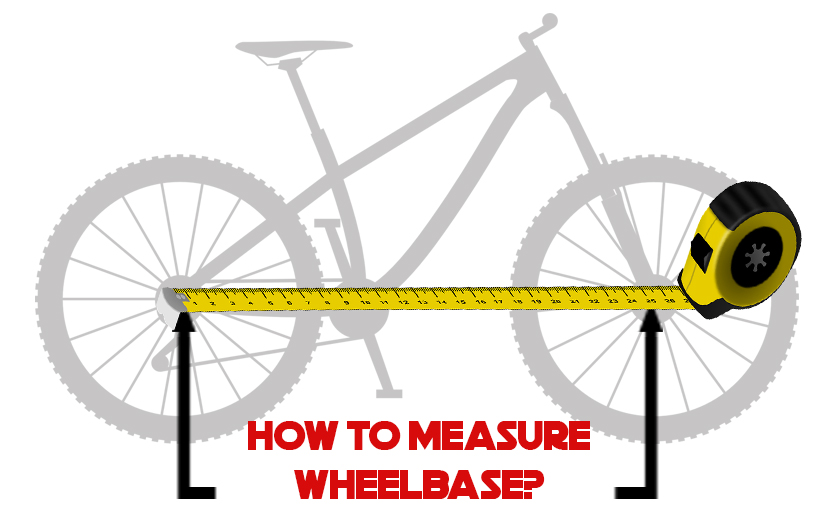
Why Do Downhill Bikes Have A Longer Wheelbase Than Other Bikes?
Downhill bikes are designed to go downhill as fast as possible. Most downhill tracks are fast, wide open, with few tight, slow turns. This actually suits a long wheelbase downhill bike perfectly, as having a super long wheelbase makes the bike much more stable and confidence-inspiring at speed. If you take a look at the evolution of DH bikes over the last few decades, you will clearly notice that DH bike wheelbases have consistently grown, due to the obvious advantages.
Is a Long Wheelbase Bike Better Than a Short Wheelbase?
Not Always. A long mountain bike wheelbase is only better than a short wheelbase if you are intending on riding downhill fast, or if you feel you could do with a bit more stability. Shorter wheelbase bikes definitely have the advantage of feeling more agile at a slower speed, and most people find it easier to get their weight moreover the front wheel, helping them get more front wheel grip. At the end of the day, it depended on your ability, your preferred type of riding, but the only sure way to know, and is to try some different bikes and see what works for you.
How do I Know If My Bike’s Wheelbase Is Too Short?
Your bike’s wheelbase is likely too short if your bike feels unstable. However, first, it’s important to check you have the right type of bike for your intended use, the correct suspension setup, and also the right tires, set at the correct tire pressure. Checking your frame’s geometry for issues should be a last resort, as it’s hard to definitively test and expensive to change. However, if you have tested everything else, the bike is too short by the process of elimination.
How Do I Know If My Bike’s Wheelbase Is Too long?
If You are struggling to get your bike around tight turns, and you’re also finding it hard to get a front-wheel grip, then your wheelbase is likely too long. It has become quite common to see riders on bikes that are too big because that’s the current trend, however, it often only hinders their riding.
Are Mountain Bike Wheelbase’s Getting Longer?
On the whole mountain, bike wheelbases are getting longer and longer. This is partly due to the evolution of the types of riding people are doing. Most genres in mountain biking are competition-driven, making speed an important factor when bikes are being designed. This desire for faster times, is pushing designers to design bikes that are longer and slacker to make them better at speed, hence why mountain bikes are continually getting longer.
More of our resources you may find interesting:

